Over 30 Years Experience in 10 minutes
Episode 5: More on First Impressions
Summary: Additional front of the house choices, what is and is not a fixer-upper, and important guidelines for the front yard.
Scott Williams: Sweet Home Santa Barbara, where the skies are so blue. Sweet Home Santa Barbara, what’s worked for me can work for you.
Jonathan Robinson: Welcome to another episode of Sweet Home Santa Barbara. I’m your host, Jonathan Robinson. I’m with my friend and realtor, Scott Williams. Welcome back, Scott.
Scott Williams: Hi, Jonathan. It’s good to be with you. Another great day in Santa Barbara.
Jonathan: Yes. We’re looking forward to learning more about the front of the house, more about the door, and little things people can do to easily increase the value of their house when they’re thinking of selling. In our last episode, we were talking about things like color, the doorbell, that doing something simple as painting the door black can lead to tens of thousands of dollars more than other colors. I mean these are counterintuitive things. What are some other ideas about when people are walking to the front of a house that sellers might want to be aware of?
Scott: Well, let me tell you a story about the front door more than just the color. Not too long ago, I had a house for sale on a busy street in Santa Barbara. There’s a drawback of the traffic noise of a busy street. I talked with that owner not only about what color to paint their door, but they had a conversation about what could we do to help eliminate this rather drastic problem. We did a bit of investigation. We found out that fiberglass doors are quite a bit more soundproof than wood ones or metal ones. And so, we got a fiberglass door. The front of the house also had many windows on it, and we chose triple pane sound block windows. We did a little sort of a judo with the buyers right there at the front door as they came in. People would come up. They can’t help but notice that it’s really noisy out there. And then, we would have them walk through the front door, we would close the door behind them and just say, “Listen.” There would be this… They would go, “Oh, that’s nice!” because they just come out of the noise. That was a really useful thing to do. It made all the difference in the world in that home selling.
Jonathan: Yes. Those are the types of things that really experienced real estate agent such as yourself knows to do that maybe less experienced agent doesn’t think of. When it comes to other practical things to be aware of on the front door, what might fit on that list as well?
Scott: Well, there’s many things that happen around the front door. We’d mentioned the doorbell. Let’s talk about the house numbers. House numbers are usually an afterthought from people there at the hardware store, or Lowe’s, or Home Depot. They buy these numbers, and they put them up on the wall. Or they’re on a trip someplace and they buy them in a shop. They bring them home and stick them on the house. I like to think beyond that. Let’s go back to that five-million-dollar home that we have in our minds, and in Santa Barbara, we would go to Capitol Hardware. You could get them also on the internet, I suppose. We start thinking about spending 10 or 15 or even 20 dollars per number instead of $15 for all of the numbers. We would buy very expensive numbers that you would see on a five-million-dollar home out there on the gate. This is what you would put up on your perhaps less expensive home. It makes a really big impression there at the front. Now, let’s string together the doorbell switch, the numbers, and a few more things that we’re going to talk about here. We want them all to match.
Jonathan: Yes.
Scott: We want to match the color, like oil-rubbed bronze or perhaps brushed nickel. Everything that we’re going to do at the front door should all be matching.
Jonathan: Yes, and people don’t think about these things because they usually buy them piecemeal for their own house when they’re living there. But when they’re selling, they have an opportunity to really create the ambiance that’s just perfect. That has to take some deliberateness.
Scott: Yes, we’re doing what you would do if you had a brand-new home in a subdivision and a model home. We are trying to do some of the things that the model home people do right.
Jonathan: Yes. Now, there’s also the lightning at the front door. What do you suggest about that?
Scott: Well, there’s usually a light that was purchased years ago. Many times, before LEDs came in, or the condition of the light is such that we just simply dispose of that light and buy something brand-spanking-new.
Jonathan: That matches everything else.
Scott: That matches everything else. We may very well go to the side doors and the rear, and patio and buy a set of them, so that the outdoor lights are all matching. Not terribly expensive, but you want to match them all and not just have a mixed-up set.
Jonathan: If a person puts in a bunch of effort and money into this, what kind of return of investment do people get on things approaching the front of the house?
Scott: Well, it’s among the highest. Actually, the top 10 things which were in the midst of sort of putting out here, most of them cost less than $100 each. You might spend a thousand dollars on these ideas, but you’re probably chasing tens of thousands of dollars or the cumulative impact on the buyers that come up to the house because it feels like the house is together.
Jonathan: Yes. Besides increasing the value of the house, it increases the chance of somebody wanting to buy that house. So, you’re spending less time on the market.
Scott: That’s entirely true. We’re doing things that sort of take friction out of the market. Now, in the war of real estate, taking friction out of the market and having the house sell has a well-known idea that’s out there. It’s that you take a St. Joseph statue, and you bury it upside down in front of your front door. I hope that if you want to do that, that you do. However, I think that most of the things we’re talking about are more concrete and more likely to lead to a higher sales price as well as selling.
Jonathan: Use every plan that you have, whether it be prayer or scientific investment as to what works. Of course, a really good real estate agent helps, I’m sure.
Scott: Yes, you put all those together and you’ll do better.
Jonathan: Absolutely. That can be fun putting that all together. I know when you sold my house, you are giving me suggestions and you took care of all these things, really. You’d call me up and say, “What do you think of this?” I’d say, “Well, whatever you think works.” You actually had people fix the lighting in the front door. I was in another city, and we ended up getting a humongous amount for my house, which is affecting my life ever since. Thank you for all your expertise. How can people best get hold of you, Scott?
Scott: Well, the best way would be through my email. Again, the name is Scott Williams. The email is scott@scottwilliams.com.
Jonathan: Great. In future episodes, we’ll be talking about many other practical ideas for you to stage and create appeal for your house, that can return a lot on your investment and make the whole transaction a lot less stressful and a lot more productive in terms of what kind of money you make from selling your house. I look forward to hosting these. Thanks for coming, Scott. We’ll see you next episode.
Scott Williams: Thank you for listening. Please subscribe to our podcast on your favorite app. If you know someone preparing to sell their home, please tell them about the podcast. Visit scottwilliams.com to contact me and download the two free E-Booklets — “Is My House Saleable Now?” and “How Not to Buy A Money Pit”. Thank you for listening.
© 2024 Berkshire Hathaway HomeServices California Properties (BHHSCP) is a member of the franchise system of BHH Affiliates LLC. BHHS and the BHHS symbol are registered service marks of Columbia Insurance Company, a Berkshire Hathaway affiliate. BHH Affiliates LLC and BHHSCP do not guarantee accuracy of all data including measurements, conditions, and features of property. Information is obtained from various sources and will not be verified by broker or MLS. Buyer is advised to independently verify the accuracy of that information.
All Rights Reserved.





